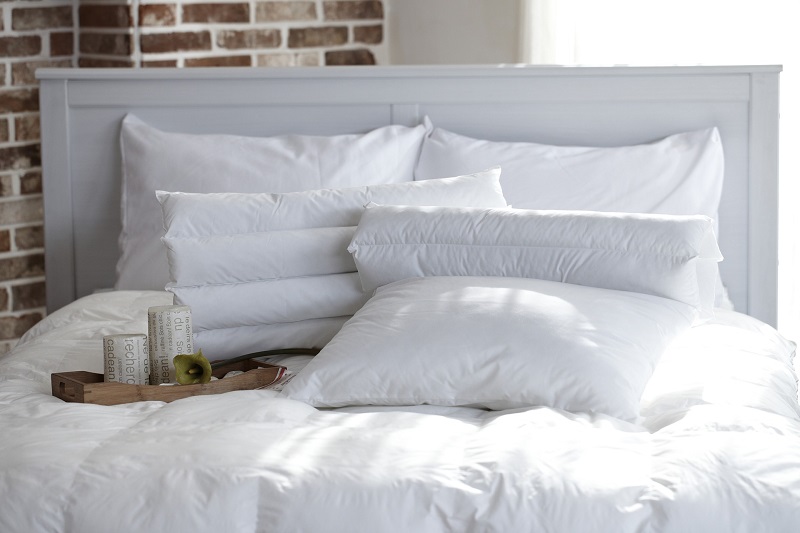Insomnia can be lethal – that’s a fair dinkum fact.
1) When left untreated, insomnia can cause hypertension, which can lead to heart disease and other serious cardiac ailments.
2) Insomnia can also double the risk of a person developing depression.
3) It’s estimated that about 13 to 33% of Aussie adults suffer from either the inability to sleep at all or the inability to stay asleep.
All of this is according to data published by both the Australian Psychological Society as well as the Medical Journal of Australia.
If you or someone you know is an insomniac, we don’t mean to scare you.
We just want you to know what you’re up against, because the more you know about insomnia, the better you can fight it.
And as with any fight, any hope of winning lies in properly assessing the battleground.
If you’re having some serious trouble sleeping and/or staying asleep, it’s time to consider the fact that…
Your Bedroom Could be the Reason for Your Insomnia
Apart from the most common causes of insomnia such as anxiety, stress, and chronic pain, another factor that insomniacs need to watch out for is the current state of their sleeping environment.
Your bedroom could be the ground zero of all your sleep-related problems.
But it Could Also be the Cure
It’s not unheard of – redesigning the bedroom to become a more sleep-conducive environment is actually already part of expert-recommended practices related to sleep hygiene.
Even the simplest changes to your bedroom can provide significant relief from insomnia and its nasty effects.
For instance…
1) Reducing Physical Clutter can Declutter the Mind and Prepare it for Sleep

Humans are highly visual creatures – most of the information we acquire is collected through our eyes, which is why we respond very easily to visual stimulation.
Unfortunately, this means that cluttered bedrooms can lead to cluttered minds, and cluttered minds can lead to mental stimulation and anxiety, both of which are all too common sources of insomnia.
So, declutter your bedroom: use different containers to organize randomly scattered stuff, collect your clothes, put away anything that you don’t need to sleep, and figure out a system for keeping your bedroom decluttered and visually organized.
Minimalism has its merits, especially for insomniacs who shouldn’t be bothered by visual stimuli before bedtime.
Decluttering your bedroom is just the first step.
The next part of this makeover might require more time and dedication.
2) Painting Your Walls Blue Walls can Induce Calmness and Sleep

According to data sourced from the National Sleep Foundation, an American organization of sleep experts, seeing the color blue has a calming effect on the human brain.
This is because human retinas are equipped with specialized receptors known as ganglion cells.
Ganglion cells directly relay information to the part of the brain that dictate our circadian rhythms – the roughly 24-hour cycles that control several of our biological functions, including sleepiness and wakefulness.
Coincidentally, these receptors are most sensitive to the color blue, which, in most parts of the world, is associated with feelings of calmness and relaxation.
In fact, having shades of blue in the bedroom can even reduce your blood pressure as well as your heart rate – ultimately putting you in a state that’s highly conducive for sleep.
It’s not just a theory.
The idea that the color blue can induce sleep has been proven in an independent 2013 study conducted by Travelodge, a chain of British hotels.
In their quest to find the most comforting, sleep-inducing color to paint their rooms with, Travelodge looked into the sleeping conditions of 2,000 UK citizens.
People Who Slept in Blue Rooms Slept Longer
To be exact, they found that people who had primarily blue bedrooms slept for an average of 7 hours and 52 minutes – well within the National Sleep Foundation’s 7 to 9 hours of daily recommended sleep for adults aged 18 to 64.
While certain shades of yellow and green were also identified to be conducive for sleep, blue was found to be the most restful and calming.
In contrast, the colors purple, gray, and brown were found to be highly stimulating and least conducive for getting a good night’s sleep.
So, if you’re redesigning your bedroom to become a veritable sleep oasis, pick shades of blue.
Apart from your walls, you can also pick blue curtains, sheets, organizers, shelves, and embellishments – anything that you can see before bedtime.
And if blue doesn’t suit your taste, you still have shades of green and yellow to choose from.
Changing the colors you see inside your bedroom is just one part of your sleep-friendly bedroom makeover.
The sense of sight can be a powerful tool, but so can the sense of touch., which is why…
3) You Should be Perfectly Comfortable with Your Mattress

Considering the fact that on average, people spend a third or 33% of their lives asleep and in bed, your mattress itself should perfectly suit your personal preferences.
Whether it’s an innerspring, latex, or memory foam mattress, the one in your bedroom should be able to cradle you to sleep with no resulting pains or discomfort upon waking up.
The only way to test this is to sleep on a mattress for several days or even months to see how your body reacts to it – so look for a mattress that offers a considerably long trial period.
That way, even if the mattress is expensive, you’ll have the option to return it for a refund if it turns out to be too soft, too firm, or simply uncomfortable.







